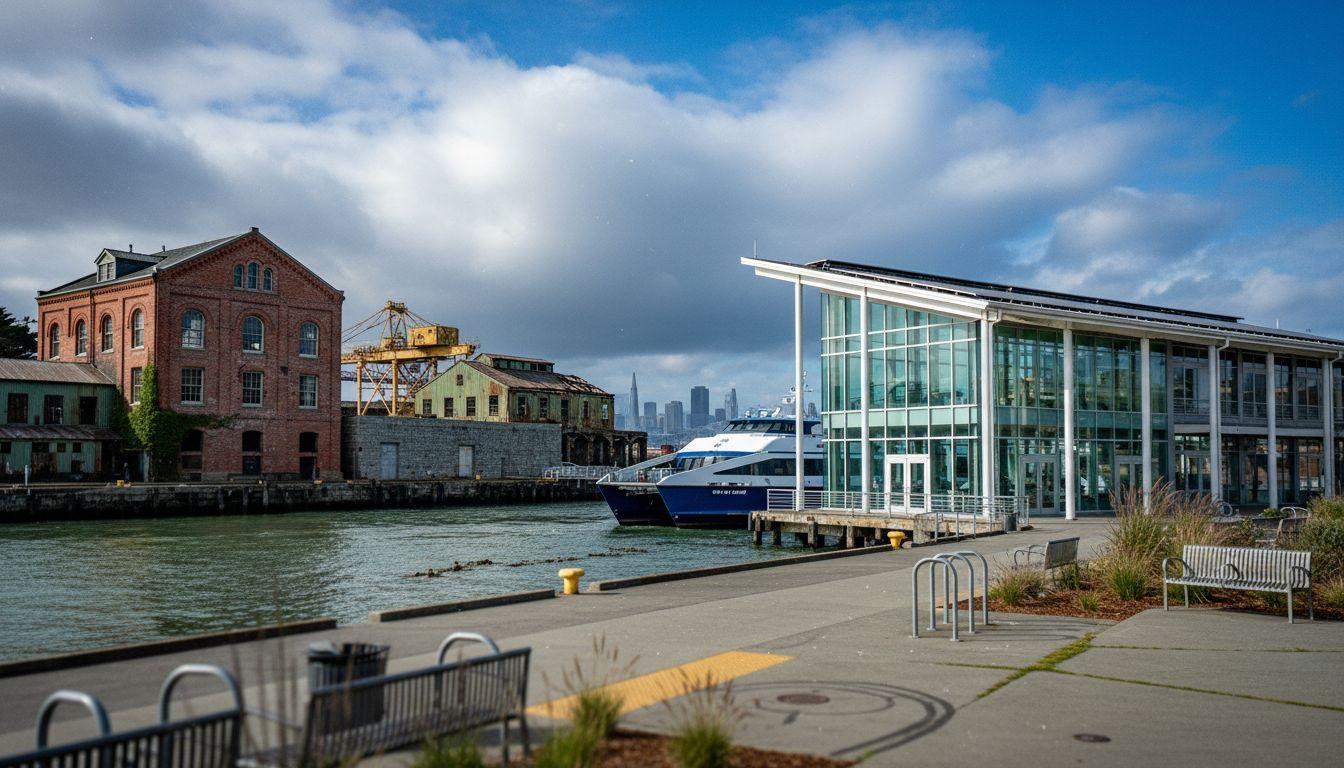San Francisco’s median rent has reached $3,500 for a one-bedroom apartment. Parking costs $30 daily downtown. Tourist crowds pack Fisherman’s Wharf while locals flee to more affordable cities. Yet just 30 miles northeast, Vallejo offers waterfront living at $2,132 monthly rent with a scenic ferry commute to downtown San Francisco.
Why San Francisco pricing has lost its logic
San Francisco housing costs are 146.3% more expensive than Vallejo. A family needing $126,000 to live comfortably in Vallejo would require $235,767 for the same lifestyle in San Francisco. Parking alone rivals car payments at $3-4 hourly in North Beach garages.
The city’s tech boom transformed neighborhoods into tourist attractions. Mission District murals draw Instagram crowds while longtime residents move away. Fisherman’s Wharf operates more like a theme park than a working waterfront.
Two-thirds of renters in Vallejo are cost-burdened, the highest rate among Bay Area cities with 10,000+ rental homes. Even “affordable” alternatives strain budgets as San Francisco’s pricing pressure spreads throughout the region.
Meet Vallejo: Bay Area living at human prices
Waterfront without the premium
Vallejo’s average rent of $2,087 saves residents $1,400 monthly compared to San Francisco. Mare Island’s historic waterfront offers community parks and walking trails. The former naval shipyard closed in 1996, transforming into an arts district with studios and galleries.
Ferry terminal parking costs $50 monthly versus San Francisco’s $30 daily rates. Oakland’s BART system offers another affordable Bay Area alternative, though without Vallejo’s waterfront charm.
The ferry factor changes everything
Vallejo Ferry connects directly to San Francisco’s Ferry Building in 45 minutes. Round-trip tickets cost $14-20, competing favorably with bridge tolls plus downtown parking fees. Morning commuters enjoy panoramic bay views instead of brake lights on Highway 101.
The ferry fleet upgraded to eco-friendly vessels in early 2025. Onboard seating faces large windows framing the San Francisco skyline. Commuters describe the journey as a daily mini-vacation rather than stressful gridlock.
What Vallejo living actually feels like
Daily life
Vallejo’s multicultural dining scene reflects Filipino, Mexican, and coastal influences. Inexpensive restaurants average $20 per meal, significantly less than San Francisco’s Mission District pricing. Marin County’s upscale dining feels worlds away from Vallejo’s family-owned establishments.
Community parks line the waterfront with picnic areas and kayak rentals added in spring 2025. Summer temperatures reach 85°F, warmer and sunnier than fog-locked San Francisco’s 70°F highs. Vallejo’s 120,000 residents enjoy 49 square miles compared to San Francisco’s 47 square miles housing 875,000 people.
Culture without crowds
Mare Island Art Walk celebrates the area’s naval shipbuilding heritage with reenactments and vintage ship displays. Annual waterfront festivals draw community participation rather than tourist buses. Local breweries operate as neighborhood gathering spots instead of destination venues.
The hashtag #VallejoViews trended in 2025 as social media discovered the area’s bay sunsets and ferry terminal sunrise views. Norwegian fjords offer similar waterfront tranquility, though Vallejo provides year-round accessibility.
Practical reality check
Ferry service focuses on weekday commuters with limited weekend schedules. Car ownership remains helpful for full Bay Area access. Vallejo’s walk score of 46 and transit score of 28 indicate moderate car dependency for daily errands.
The city appeals most to families, remote workers, and budget-conscious commuters. Nightlife seekers and car-free lifestyles find better options in San Francisco proper. International alternatives offer similar waterfront living at comparable prices.
Home prices dropped 5.8% in October 2025 to a median $530K. Properties sell within 54 days compared to 47 days previously, indicating stable rather than overheated market conditions.
Your questions about Vallejo answered
How much can I actually save living in Vallejo?
Average rent savings reach $1,400 monthly compared to San Francisco, totaling $16,800 annually. Ferry terminal parking at $50 monthly costs less than two days of San Francisco downtown parking. Casual dining averages 30-40% less expensive than comparable San Francisco neighborhoods.
What makes Vallejo’s community different from San Francisco?
Vallejo maintains family-oriented neighborhoods with community parks and local festivals. The city’s naval heritage creates strong civic pride without tourist commercialization. Residents know their neighbors and participate in waterfront celebrations drawing locals rather than visitors.
How does the ferry commute compare to driving or BART?
The 45-minute ferry ride offers scenic bay views and productive commute time. Round-trip costs of $14-20 compete with bridge tolls plus parking fees. Ferry passengers avoid Highway 101 traffic jams and crowded BART cars during peak hours.
Morning light touches Vallejo’s waterfront as commuter ferries prepare for departure. San Francisco’s skyline emerges across calm bay waters. The city awakens slowly, unhurried by tourist schedules or tech company shuttles.
